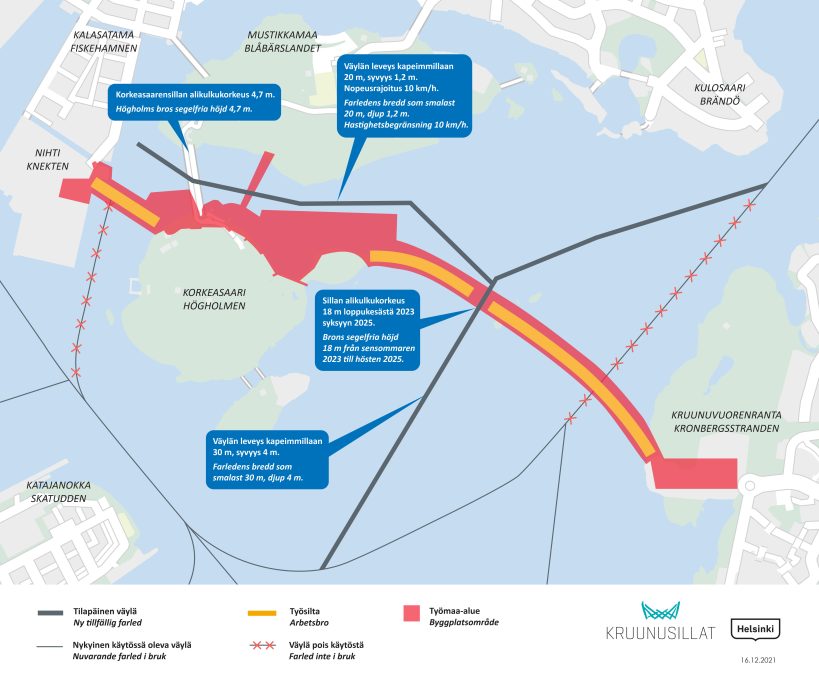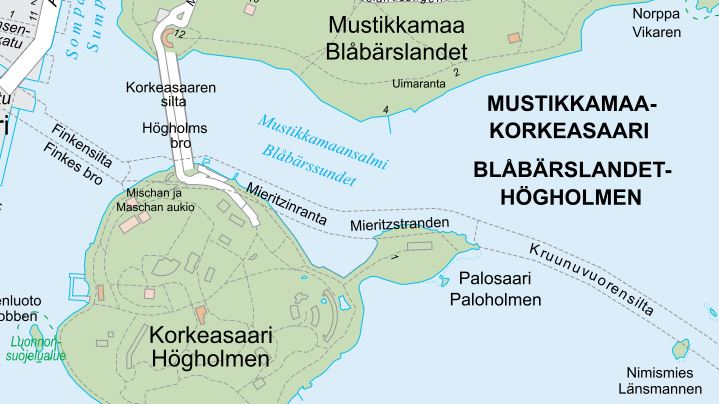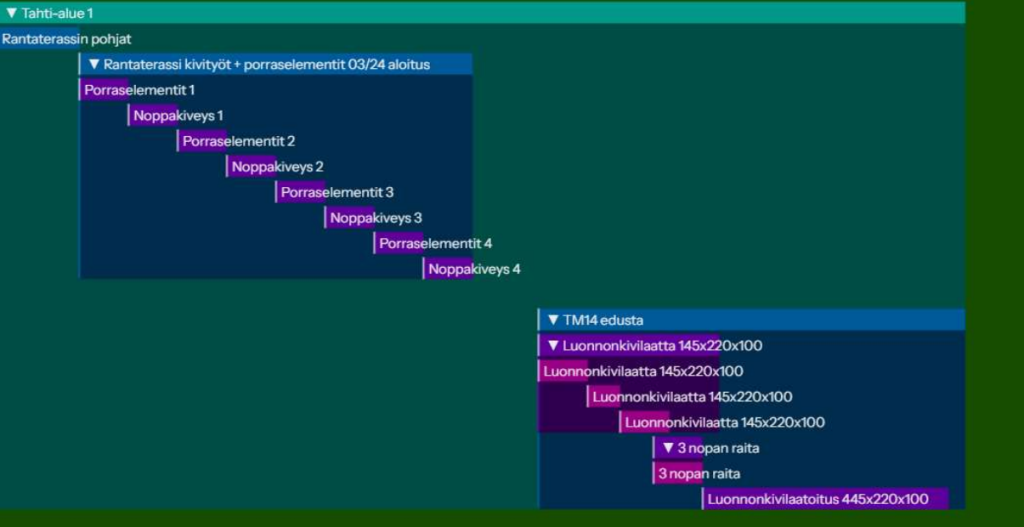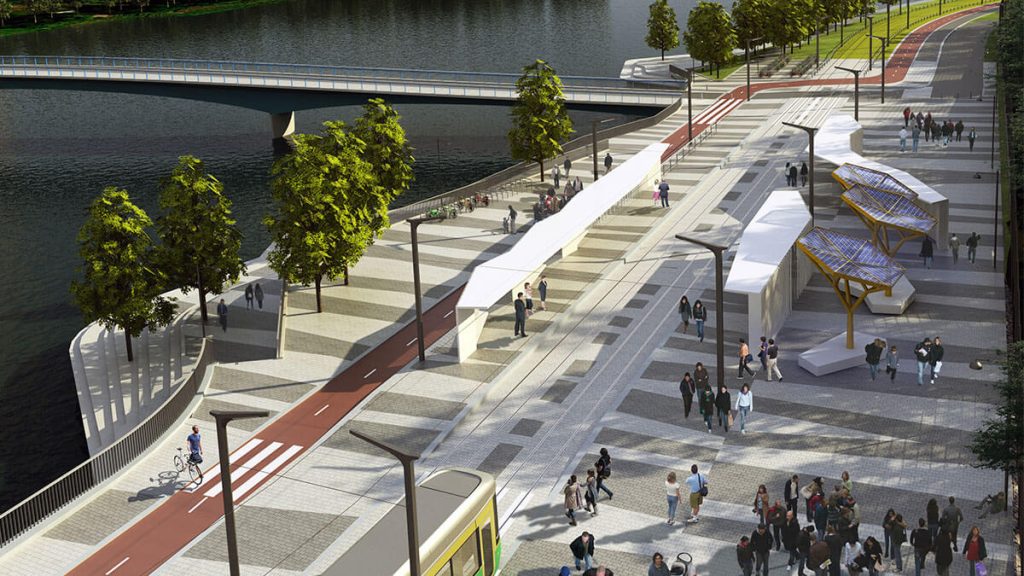The planning and scheduling of stoneworks are an essential part of Korkeasaari’s infrastructure project. Managing a large site requires careful planning and efficient use of resources. We got to interview YIT’s project engineer Eelis Lokka, who helped us dive deeper into the work environment of the Korkeasaari section of the Kruunusillat alliance. Eelis shared his experience from the stone works and how he has used the Zeitmaps web application to assist in the progress of the stone works in the Korkeasaari section.
Korkeasaari part of the Kruunusillat project
Kruunusillat is the largest ongoing infrastructure project in Helsinki, renewing the main transport links in the Eastern part of Helsinki the capital center. The project scale and impact opens doors for the development of the city in its vicinity. Its positive effects extend to several neighbourhoods, promoting comprehensive development of the urban environment.

The Kruunusillat project aims to provide seamless public transport to the Laajasalo area and integrate it into the area’s public transport system. The plan includes the construction of a new 9-kilometer tramway that will connect the center of Helsinki to Hakaniemi, Nihti, Korkeasaari, Kruunuvuorenranta and Yliskylä. The project also includes the construction of cycle paths, footpaths and other street structures with the necessary arrangements. The project will be implemented in two phases and with different contract forms, and its total cost is approximately 326 million euros. (Source: Kruunusillat project information https://kruunusillat.fi/hanketietoa/ )
Using Zeitmaps
The extent of Korkeasaari’s stone works extends from Finken bridge to Mierizin shore, as well as Mischa and Mascha square. The large scope of work emphasizes the importance of planning. In order for the implementation of the stone works to go smoothly, scheduling is a crucial part of the process.

With the help of Zeitmaps, the project sections of Korkeasaari’s stone works were divided into different takting areas, which enabled the stone contractor to work efficiently following the production pace also known as Takt Time Planning (TTP) . Smaller sub-assemblies helped reduce overall lead time and increased predictability.
A schedule was drawn for each area based on the stone types defined in the plans and their installation. The work efficiency of the stonework contractor was carefully evaluated in order to keep the schedule realistic and feasible.
For example, Takting area 1 covers the installation of stair elements, cube paving and natural stone tiling. The lead time for this is about 5 weeks, which is shown in the picture.

Each area has its own amount of stone calculated, and when the material arrives, we get informed about which area’s stone has arrived. The start of deliveries is also marked in the Gantt schedule. Management of materials become easier this way, and each area has the necessary stone available at the right time on the job site, Lokka confirms.
Coordination of technical disciplines in Zeitmaps plan. Source: Eelis Lokka, YIT
With Zeitmaps, it was possible to easily coordinate material management with takting areas and also with other work phases. This reduced errors and ensured smooth progress. In addition, the location based coordination of different work types, such as street and railway construction, made it easier to manage the construction site.
Schedule optimization
With the help of Zeitmaps, the schedule could be effectively optimized, which improved the flow of the project and the use of resources. Even complex work steps could be presented clearly and comprehensively.

Zeitmaps proved to be a valuable tool in the planning and scheduling of Korkeasaari’s stone works. Although this style of scheduling program is new at infrastructure sites, it makes takting production simpler compared to before. In the Korkeasaari project section, experience showed that the use of Zeitmaps significantly facilitates the management of large infrastructure projects, when it is possible to coordinate work overlaps and pacing in the map view
Because of the visual aspects of Zeitmaps, schedules can be presented to different contractors, as well as coordinating different types of technology and material flows to the site. This program makes complicated schedules easier to understand.
Author: Zeitmaps & Eelis Lokka YIT, Project engineer, Korkeasaari
Find out more about the use of Zeitmaps and the possibilities it offers in planning and scheduling infrastructure projects. Effective scheduling is the key to successful project implementation. Leave us a comment or contact us for more info.